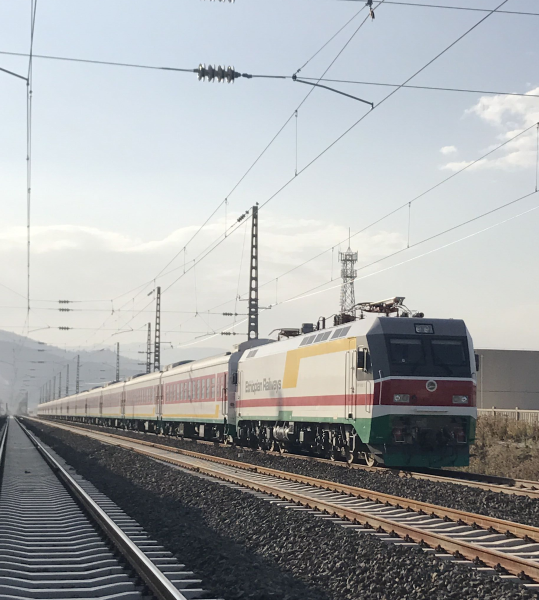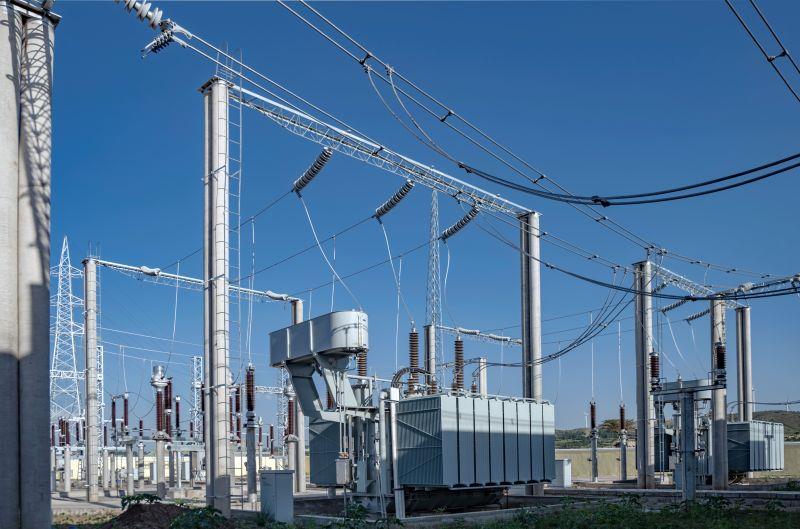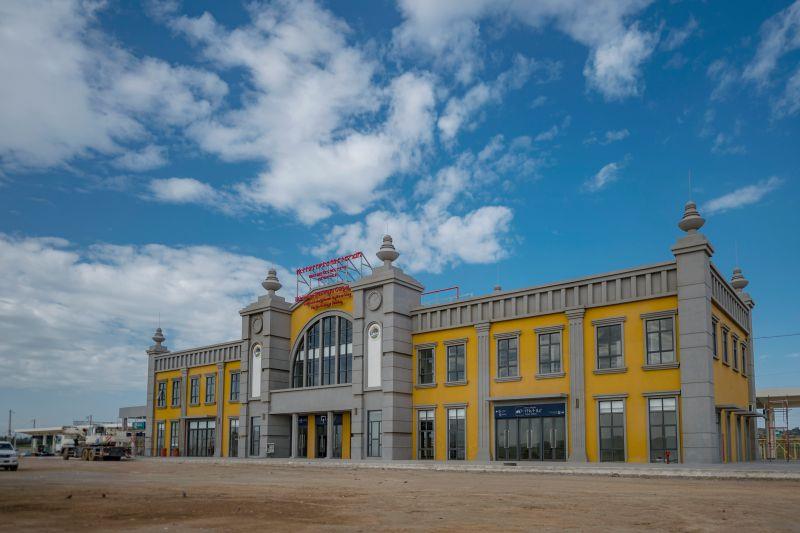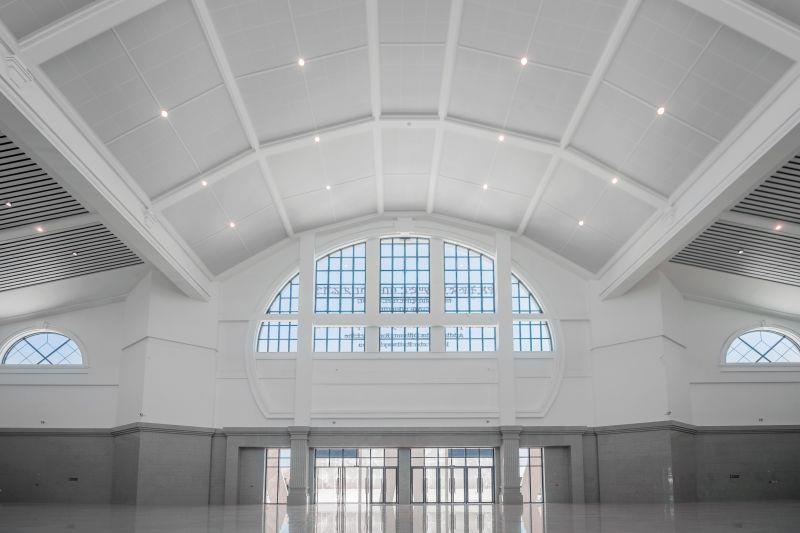Anthem of CREC—“Trailbreaker”
I. Overview of Project
Addis Ababa-Djibouti railway line (hereinafter called AAD line) is the first modern cross-border, standard gauge, electrified railway in Africa. Also, it is the first modern overseas railway constructed by Chinese enterprise with complete adoption of Chinese railway standard and equipment. Being a demonstration project of China-Africa industrial capacity cooperation, AAD line is regarded as the early harvest of China-Africa cooperation on railway, highway and regional aviation network as well as on industrialization. Adopting the technology, equipment and standards of Chinese railway industry, now the railway is driving the economic and social development of Ethiopia and Djibouti.
(2)(3)(4)(5)(6)(7).png)

With the total length of 751.7km, AAD line stretches from Addis Ababa (capital of Ethiopia), then runs along Adama, DireDawa (two big cities of Ethiopia), and ends in Djibouti port. It was designed and constructed in compliance with Class II Chinese electrified railway standard at design speed of 120km/h. Total investment amounts to approximately 4 billion USD.
(2)(3)(4)(5).png)

II. Main Construction Work
Main construction works include: 40,100,000m3 earthwork; 1,540,000m3 ancillary masonry work; 61 bridges in total length of 11.6km; 37 frame bridges of 10,204m2 on top; 453 culverts of 8,855 horizontal linear meters; 453km track-laying works; 189 houses in total area of 91,048m2.
(2)(3)(4)(5).png)
III. Significance of Construction
Comparing to highway transportation, the transit time between Djibouti and Addis Ababa is shortened from 7 days to 10 hours upon the completion of AAD line. This is an effective solution to the insufficient transportation capacity on this corridor.
ADAMA Sation
BISHOFTU Statiom
LEBU Station

MODJO Station


IV. Hotspots
1. The Longest Bridge in Ethiopia
(2)(3).png)
Located at south-west of Addis Ababa, this 1035.33m-long grand bridge is the longest bridge of AAD line and Ethiopia. With 32m-long span, the bridge comprises of 30 piers and 2 abutments. The foundation of bridge consists of 4 spread foundations and 216 pile foundations. Adopting solid pier, the height of pier body reaches 6.5m-13.5m. From a far view, the bridge looks like a mellow crescent moon inlaid in the beautiful grassland, which has become a hotspot in local area.
2. The Most Beautiful Bridge in Ethiopia

The grand bridge at DK42 was the first grand bridge finished in AAD line, and labeled as “No.1 Bridge in AAD Line” by the Employer-Ethiopian Railways Corporation (ERC). It is not only a work item, but also a bright scenery. When officers of ERC and the government visit the site for inspection, they always took photos with the bridge.
3. Bridge with Maximum Span in Ethiopia
.png)
Awash grand bridge was built over Awash River. The terrain is so steep that the elevation difference between river valley and platforms on both sides is about 80m. The length of Awash grand bridge reaches 155.45m, the height 71m. The bridge adopts (40+64+40)m pre-stressed concrete continuous beam. It is also the first pre-stressed concrete continuous beam bridge built in Ethiopia. Awash grand bridge adopts rectangular hollow pier, T-shape abutment, and pile foundation. Pier construction adopts climbing formwork method while continuous beam construction adopts symmetric light basket cast in cantilever method.
4. New Scenic Spot for Wedding Pictures- Labu Station

Being the largest railway station on AAD line, Labu station serves for the capital of Ethiopia. The total area of station reaches 8308m2. The architectural style is integrated with the style of “Abbaa Gedaa”, “Haadha Gedaa” as well as the cultural features of “Muudaa Furii”. This 3-storey building is in height of 36.7m, and has maximum accommodation capacity of 2,000 people. Both interior and exterior wall of the first floor are decorated with stone tiles. The overall color of station building adopts beige. The square in front of station covers around 11,400m2 land. The station has become a new attraction in capital of Ethiopia. Many young couples prefer to take their wedding pictures here, and the station has become a witness of their lifetime happiness.
V. Impressive Stories
1. Chinese couple took their child to Ethiopia for school
Manager Yuan Haobo and his wife Zhang Xianghong were called as “workaholic” and “Iron Lady” respectively. Even through working in Ethiopia at the same time, it was seldom for the couple to meet each other due to heavy works at different sites. In order to facilitate their work, they took their child to school in Ethiopia. Yuan Haobo’s skin also became black due to perennial exposure under sunlight in Ethiopia. At his early 40’s, his hair has turned into white, which is in sharp contrast with his black skin. Once he went to work site for inspection, on-site staffs mistook him as local people owing to his skin color. Due to the harsh climate of Ethiopia and long-term overworking, Zhang Xianghong suffered from malignant folliculitis. Near the opening of railway, she still persisted in working. Instead of flying back to China for treatment, she went through surgery at local hospital. After the surgery, she braved the pain and continued to work.
Pic 1: Yuan Haobo and his wife Zhang Xianghong
.png)
Pic 2: Yuan Haobo on his son’s high school graduation ceremony

2. Everyone ate 0.5kg noodles for one meal
Space constraint of worksite made it impossible to erect a large crane for hoisting and erection of main transformers. Yang Daxiang, deputy manager in substation discipline, led his team to adopt the most traditional method- installing sleepers and rails, then using hydraulic jack to push transformer into position. Relying on manpower, they eventually installed 18 main transformers in unit weight of 50 tons. Due to tight schedule, Yang Daxiang and his team lived and worked on the construction site for more than one month. Being exposed under strong sunlight, the color of their skin turned into black. Due to high intensity of work and the tight nerves, they were physically excessive exertion. One day in the evening after work, these black youths cannot wait till the dinner time and rushed into kitchen. These 10 guys ate 5kg of noodles in total. Holding large bowls in their hands, eating noodles in rush, everyone in the room felt the bitterness and cannot help but cried.
Pic 1: Yang Daxiang operating jack to install main transformer

Pic 2: Installing main transformer


3. They choose to work in Ethiopia before retirement
(1) Ma Jiangcheng, who approached to the age of retirement, previously worked in the head office. He made a request to work in Africa. When the whole line was completed, Ma Jiangcheng participated in operation preparation and management, and carried out the urgent task for disaster relief grain transportation.
(2) Lei Chengkun, a 59 years old worker, will be retired in a few months. With his personal enthusiasm for railway industry, he decided to participate in construction works of AAD line. Because he is the oldest one in the project, people called him Grandpa. Even at this age, he still worked as energetically as a young guy.
4. He left his newly-borne twin daughters for work
Li Yun left his 100-day-old twin daughters and came to Ethiopia with his team. Overcoming kinds of difficulties, they eventually completed construction tasks well. When he missed daughters, Li Yun can only stare at his phone which was filled with their photos therein. The schedule of station decoration was extremely tight. Li Yun worked in Ethiopia for more than one year without coming back home.
5. They overcame difficulties together
Xia Fenzhen had not been back home for many years and even could not witness the birth of his child; some employees repeatedly asked leaders to return to the camp for a bath; Chen Yuehong, Fang Linbin, Gong Guojun stick to their posts at their mothers’ death; Zhang Peng grew up from a worker to company's employee, and finally became a technical expert. When employees got sick, their colleagues took turns to take care of them in hospital.
6. Marriage between Chinese and Ethiopian
(1) Chen Wanjun, chef of Mojo camp, and an Ethiopian girl BALECHA/SHEWALEM fell in love at their first sight and got married later.


(2)Liu Yang has lived in Ethiopia for 7 years. When he started to work for AAD line, he has already got married with an Ethiopian girl. Now his child is 3 years old. He has purchased house and vehicle in Addis Ababa. The manager of project office often visits his home and experiences authentic life culture of Ethiopian locals. Because of Liu Yang, his wife loves Chinese culture and Chinese cuisine, and also spreads Chinese culture to her family and friends. It is a good folk-story of promoting cultural exchange between China and Ethiopia.
7. Oversea Model Worker Studio
Xu Zhou, an engineering manager, set up the first “Overseas Model Worker Studio” of CREC. Based on practical features of project and technical measures, they worked out 2 construction methods and trained 8 technical staffs. Under his leadership, project office got unanimous good comments from Employer on numerous inspection occasions. Also, project office had won the first place in the comprehensive evaluation of whole line for three consecutive years since 2012.
8. Let the world hear and understand Chinese standard
As an engineering manager, Xu Zhou paid attention to details in his work. He prepared and promoted several technical documents such as construction Organization Design of Second Section of AAD Line and Detailed Construction Rules of Subgrade Work. For better communication with the Employer, Xu Zhou kept on learning English every night. When the General Manager of ERC visited the work site, Xu Zhou reported relevant information entirely in English. It changed the Employer’s view that Chinese engineers do not understand English. Modjo worksite has been the window of publicity for the Employer owing to its standard work process and good management by Xu Zhou. Besides, the worksite has been visited and interviewed by national TV channel of Ethiopia.
9. Working over day and night
Material procurement and shipment is a great task. The first batch of materials included more than 1,000 kinds of nine types of canteen supplies, daily necessities, office supplies, pre-fabricated houses, medical supplies, entertainment facilities, tools, etc. Besides, it involved export, commodity inspection, customs declaration, export restrictions, port collection, shipment, inland transportation, warehousing and other cumbersome issues. As the major unit of the Ethiopian project to collect materials, the employees of Chengdu Branch took the initiative to give up their rest day. The warehouse located in Chengdu was brightly lit overnight. Under tremendous pressure, employees finished their tasks and the first batch of materials arrived at Tianjin Port on time.
10. Western-style Birthday Party
In a foreign country, it’s our eternal theme to provide our employees the feeling of sweet home. Therefore, we held domestic video symposiums on holidays, one-month paid leave per year, and one warm site for each person. However, what makes everyone happy is employee birthday dinner held in each quarter. Different from domestic ones, the birthday party is in the form of Western cocktail party. The project office held a simple but grand birthday party for employees in weekend. The party mixed western cocktail party with traditional Chinese element. The project office invited some friends from other Chinese enterprises to participate in our party, and everyone gathered together to send a blessing to the birth-man.

11. From foreigners to friends
In August 2015, construction of AAD line was carried out at ECHU, a big village of 1,000 people. Most of the villagers believed in Christianity and hold regular group worship services in a dilapidated temporary place. Because the village was relatively closed, villagers have never seen such a large-scale and modern project. As a consequence, local villagers had great resistance to railway construction and frequently hindered construction work. At that time, the construction schedule was extremely tight in this section. The project office tried to communicate and resolve the issue, but it was unsuccessful. Wang Jiang, director of locomotive depot, felt anxious then. One day, he entered into the village with two interpreters and tried to coordinate with village head. On the same day, villagers were holding a worship. When hundreds of dressed up villagers were doing rituals, Wang Jiang and interpreters stood quietly and waited until the worship service finished. Thereafter, the village head found out Wang’s politeness in waiting, shook hands with him, and introduced Wang to the church's leader. The leader was a very knowledgeable person. He gave explanation why the villagers could not accept railway construction. The major reason was that the village had not been open for many years--activities of so many foreigners made them feel offended. During the conversation, Wang learned that they were building a new church. He thought it was a good opportunity. Then he returned to manager office, applying for some steel and wood on the site as a kind of friendship assistance to the village. Plus, project office gave some sand & stone materials as gift. This behavior greatly touched the villagers. Thereafter, local villagers treated Chinese as friends rather than foreigners and had never hindered construction work again.
VI. Deep friendship between Chinese and Ethiopian
1. Creating job opportunities for thousands of Ethiopian residents
Hundreds of Ethiopian workers were engaged in construction works at peak time, so that it realized perfect match of management staffs and construction workers. The project office actively implemented “Three Systems” to strengthen the management of Ethiopian staffs. The first one was work attendance checking system. The second one was “1 VS 5+” contact system, which meant that each Chinese employee should contact and help at least 5 Ethiopian employees. The third one was barrier-free communication system, which required that Ethiopian management personnel should be engaged and involved in the management of local workers.
For convenient and comfortable living of Ethiopian employees, project office built dormitories and dining room particularly for them, provided the local main food-injera and bedding sets for them. Outstanding Ethiopian employees were awarded with prizes every month. Besides, Ethiopian employees were allowed to get advance payment of monthly salary. Shuttle bus as provided by the project office carried Ethiopian employees from the worksite back to home everyday.
2. Friendship between Chinese couple and their apprentices
Zhao Dechao and Song Dongmei, a couple from Sichuan, were working in lab. They not only strictly control the quality of the project, but also bring out several local apprentices. One is Moxissa and another is Naama. Zhao Dechao was mostly impressed by these two apprentices, as they were completely different in working manners. When Marma learned, the experimental values were always closer to the standard values. But the results produced by Mossissa were always unreliable. Once, Zhao Dechao asked Moxisha to conduct fineness test of cement. The result was 10 times different from the standard value, and the product was identified as unqualified. After Song Dongmei's re-examination, it was proved to be Mossissa’s mistake in decimal point. Song Dongmei talked to Mosesa and found that Mosesa's family condition was not very good. He was the only labor force in his family. Therefore, Song Dongmei promised to give him another chance. Mossissa also cherished it and reviewed it twice. Seeing his change, Zhao Dechao and his wife taught him more work skills. When Zhao Dechao and Song Dongmei returned to China, Mossissa shed tears when saying farewell to the Chinese couple.

3. Teach a man fishing
During the construction of our beam yard, the local employee XIALE was an unskilled worker in lab. In the capacity building program held by project office, Chinese employee Kang Jie recognized XIALE as his student. Overcoming communication difficulties, he taught XIALE by example. XIALE soon mastered some test skills, and became a testing assistant in one year. After completion of construction works, XIALE was hired by another Chinese company for the reason his testing skill.
4. Construct a road benefiting local village
Black cotton soil and agricultural products are rich along the corridor of AAD line, but the traffic was inconvenient that there were no roads in many villages. Villagers can only travel on foot, agricultural products can only be hauled by donkey. Moreover, they can only walk in rainy season due to mud silt. According to villagers of Furi, people had to take turns to lift pregnant woman to hospital for more than 10 miles. Thereafter, project office considered transportation for adjacent villages when constructing construction access road. If allowed, the construction access road will be extended as far as possible and used for transportation of villagers. In some unreachable villages through access road, the project office built a new road for them. These roads built along the line have become road to rich for local residents. Villagers can now haul food and vegetables by motor vehicles to capital city for sale. Villagers became rich and the thatched houses were replaced by new iron sheet houses. They did not have to carry the sick or pregnant person to the hospital by hands and they could drive vehicle into village for marriage ceremony.

5. Drilling well for water
Most areas in Ethiopia are located in tropical savanna climate. There is very little rainfall in dry season for more than half a year. Abundant water exists underground so utilization rate is very low. In dry season, the villagers have difficulties in getting water. They have to travel for several kilometers away to take water from small ponds formed after rainy season. With pollution and sharing by humans and animals, the water quality is not satisfactory. Taking consideration of the water intake demand of the villagers during construction, the project office helped them to drill wells and taught well-drilling techniques.
(1) Aid in construction to resolve drinking water problem
The DK27 grand bridge is located in Welfare Village of Sebel, Oromia. When digging in a depth of more than 10m, we could find groundwater. Groundwater is not good for our construction and will bring difficulty and hazards to construction. However, it is a good news for local villagers. During construction period, villagers in Welfare Village around DK27 grand bridge came for water. But when digging piles were filled with concrete, surrounding villagers lost their water intake points. We have been considering doing something for the local villagers and digging a well for them so that nearly 200 villagers around the village can drink clean water in the rainy or dry season. We used artificial digging piles to drill wells. Concrete wells were used around interior wells. When digging into 12 meters depth, clean groundwater was exuded from the well. To ensure that the villagers also took water when the groundwater level was low in dry season, we continued to dig into 15 meters depth. When villagers took clean groundwater from the well, we felt proud and happy. During the whole construction period, we not only provided water for villagers along the line by drilling wells, but also used sprinklers to deliver water to villagers. All the camps of the Chinese personnel laid water pipes outside the camps to provide free water intake points for local people.
VII. Benefits to local people
1. Well-off level living
The interpreter Guesses studied in China for two years and became a “Chinese hand”. He likes to chat with Chinese people, and has a favor for Chinese food and Chinese traditional culture. He is proud of working for CREC. In about one year, Guesses purchase a car and his life has entered a well-off level through his efforts in work.
Pic 1: Guesses interpreting on site

2. Chinese culture “promoter”
The driver of project office, Joseph, has a change in his impression of China, recognition of Chinese culture, and friendship with the Chinese. There are also many Chinese elements in Joseph’s home, which are gifts from his Chinese colleagues. On the wall of his house, there are many photos taken with his Chinese friends. He also often talks with his friends about China, explains Chinese culture to them, and eliminates some stereotypes on China.
Figure 1: Joseph’s photo in opening ceremony of Addis Ababa Light Rail Transit

3. For 4-years’ relation, Tessy chose to stay
Local driver, Tessy, was a taxi driver before he worked for CREC. At that time, he worked more than 10 hours per day while he just got a 3-year-old child after marriage. However, he earned less than 2000 Ethiopian Birr per month. Although he knew little about China and Chinese railway, he resolutely gave up taxi driver job and became one of first local employees in the project. In the past 4 years, a lot of local employees resigned, but Tessy did not do so. The 4000 Birr salary, a big amount for him in the past, was not so big anymore, but Tessy still decided to stay and served as "local translator", "purchaser" and "coordinator" of project office. With the support of project office, Tessy also mortgaged his own house under the national policy of “affordable house” of Ethiopian. His life has stepped into a well-off society.
From knowing nothing about China, Tessy now cannot be separated from China. His recognition of Chinese culture and his friendship with Chinese have affected everyone in his circle. When he had difficulty in purchasing house, his Chinese friend lent him money. In Ethiopian new year, his Chinese friends visited his home. Accordingly, Tessy did a great job as a tour guide for Chinese in his rest time. He guides Chinese to purchase material, to resolve disputes and guide Chinese to travel. Besides, he usually promotes China, explain the culture difference between China and Ethiopia to his friends and eliminate misunderstanding to China of local residents.
4. Planting the greenery
Subgrade is the major component of AAD line. The muddy phenomenon will occur in both filling section and excavation section. Ethiopia’s heavy rainfall in rainy season can easily cause soil erosion, which will pollute environment and affect project quality. The project office upheld environmental protection concept in domestic construction. In subgrade construction, project office tried to complete greening after subgrade work was done. At first, local employees did not understand. Now the subgrade has been filled with green grass. In the process of subgrade construction, many borrow pits and disposal areas were reclaimed, planted and protected. DK18 and DK20 disposal areas were rocky beach in the past, project office laid black cotton soil on the surface. Now, these two disposal areas have been planted with injera.

5. An Ethiopian speaking Sichuanese
Abdi, an Ethiopian native, has been working for CREC since the commencement of construction works in 2012. He is intelligent and fond of study. Firstly, he learned technologies from Chinese workers. He got good command of concrete, formwork and reinforcement bar skills in a short period. Since most project management staffs came from Sichuan province of China, Abdi could often hear Sichuanese. After a period, he learned to communicate with Sichuanese. Because of his talent, project office assigned him as a team leader. Through further communication, Abdi not only learned Chinese technology, Chinese language, but also learned the careful and responsible work attitude. He used to enjoy leisure and free lifestyle. But now he is willing to overwork in tough times. Previously, he is a “moonlight clan”. Now he has learned to save money. In the past years, he has saved tens of thousands of Birr. After completion of project, he plans to get marriage, purchase an engineering truck, become a contractor and live a better life.
 Track-laying of Vientiane-Luang Prabang Section of China-Lao...
Track-laying of Vientiane-Luang Prabang Section of China-Lao... Record-setting Subsea Tunnel Completed
Record-setting Subsea Tunnel Completed President of Sierra Leone Attends the Groundbreaking Ceremon...
President of Sierra Leone Attends the Groundbreaking Ceremon... CREC Awarded at the 6th China Grand Awards for Industry
CREC Awarded at the 6th China Grand Awards for Industry The Second Bid Section of Cukaru Peki Copper-Gold Project in...
The Second Bid Section of Cukaru Peki Copper-Gold Project in... Vientiane-Luang Prabang Section of China-Laos Railway Comple...
Vientiane-Luang Prabang Section of China-Laos Railway Comple... CREC Once Again Wins Highest Award in Global Tunneling Secto...
CREC Once Again Wins Highest Award in Global Tunneling Secto... Affiniam Dam Rehabilitation Project in Senegal Handed Over
Affiniam Dam Rehabilitation Project in Senegal Handed Over Chinese New-type Isometric Tube OCS Masts Exported to Israel...
Chinese New-type Isometric Tube OCS Masts Exported to Israel... Mengyang Tunnel along the Yuxi-Mohan Section of China-Laos R...
Mengyang Tunnel along the Yuxi-Mohan Section of China-Laos R... Padma Bridge Rail Link Project in Bangladesh Makes New Progr...
Padma Bridge Rail Link Project in Bangladesh Makes New Progr... CREC-built Padma Bridge in Bangladesh Finishes Closure
CREC-built Padma Bridge in Bangladesh Finishes Closure Main Structure of Luang Prabang Station along China-Laos Rai...
Main Structure of Luang Prabang Station along China-Laos Rai... Longest Tunnel of China-Laos Railway Cut Through
Longest Tunnel of China-Laos Railway Cut Through Another Tunnel along Jakarta-Bandung High-speed Railway Cut ...
Another Tunnel along Jakarta-Bandung High-speed Railway Cut ...


